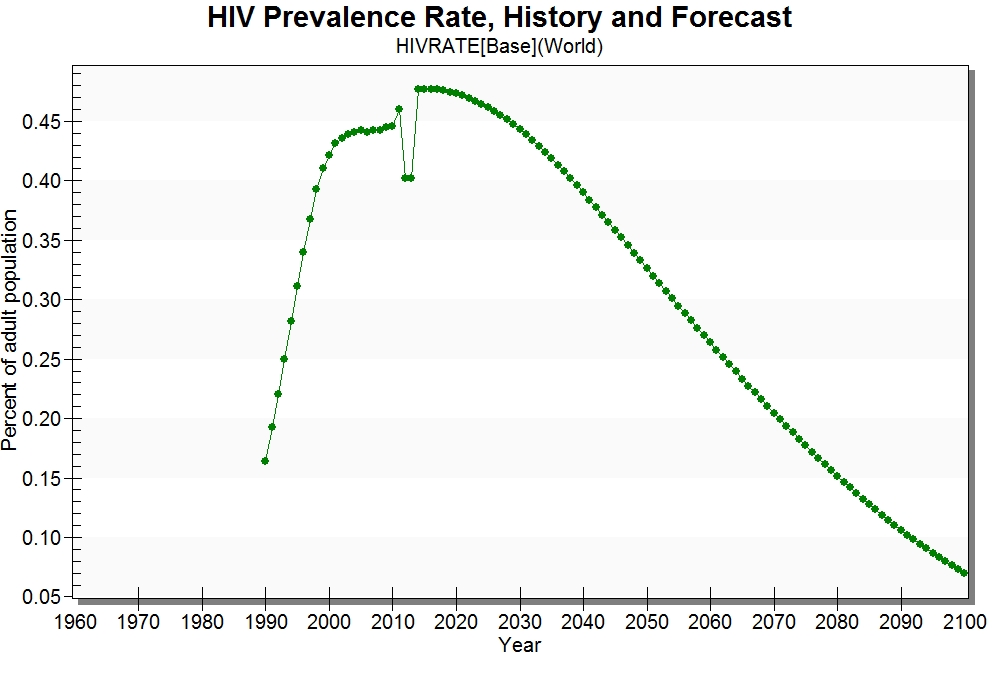December 2016 vetting
Foreign aid vetting
When viewing absolute values, foreign AID drops off quite suddenly for many countries. There is also upward kinks in the forecast for many countries. Mohammod says this is because of a shift from convergence year. It doesn't look as drastic when viewed as a percent of GDP.
aidrecm - new parameter
Aid (foreign) receipts multiplier - Mul Base 1
Tested the "high" value for parameter by interpolating to 1.2 over 10 years for Africa. Foreign aid increase relative to the Base Case by 7.9 percent over 10 years.
Scenario rerun
Test of scenario run without enabling new feature: Created a scenario where gcorruptm increases to 1.2 over 2 years (2014 to 2016) for Argentina. Checked results, went back to scenario tree and changed the paramer to 1.1 for 2016 to 2018 (interpolated over 2 years). Clicked "Run Scenario". There is no option to "reset year to 2014" nor does it alert me that the model will begin running in 2016. I enter 2018 and click "select run". The model begins runing in 2014, as expected.
Test of scenario with with new feature enabled: Created a scenario where gcorruptm increases to 1.2 over 2 years (2014 to 2016) for Argentina. Checked results, went back to scenario tree and changed the paramer to 1.1 for 2016 to 2018 (interpolated over 2 years). Enabled the new feature (scenario ReRun options > avoid automatic reset of initial year to run) and clicked "run scenario". The model defaulted to begin the run in 2017, as expected.
Test of running a "single run" without any parameter change and without feature enabled: Clicked "scenario analyssis > run > single run" and ran model to 2016. When returned to the main menu, I clicked "scenario analysis > run > single run" again. Brought me to the scenario run screen, but notified me that the model had already run and that it would begin in 2017 rather than 2014.
HIV/AIDS
The global AIDS death rate drops much faster in 7.27 than in 7.26. This is because we've removed the "double bubble" of AIDS deaths, and because the parameter representing the technical advance of ARVs has been increased. Both of these interventions conform with the forecasts and findings from the Spectrum model. While prevalence stays higher for much longer in 7.27 for many countries (notably South Africa), globally, HIV prevalence does not change dramatically.





